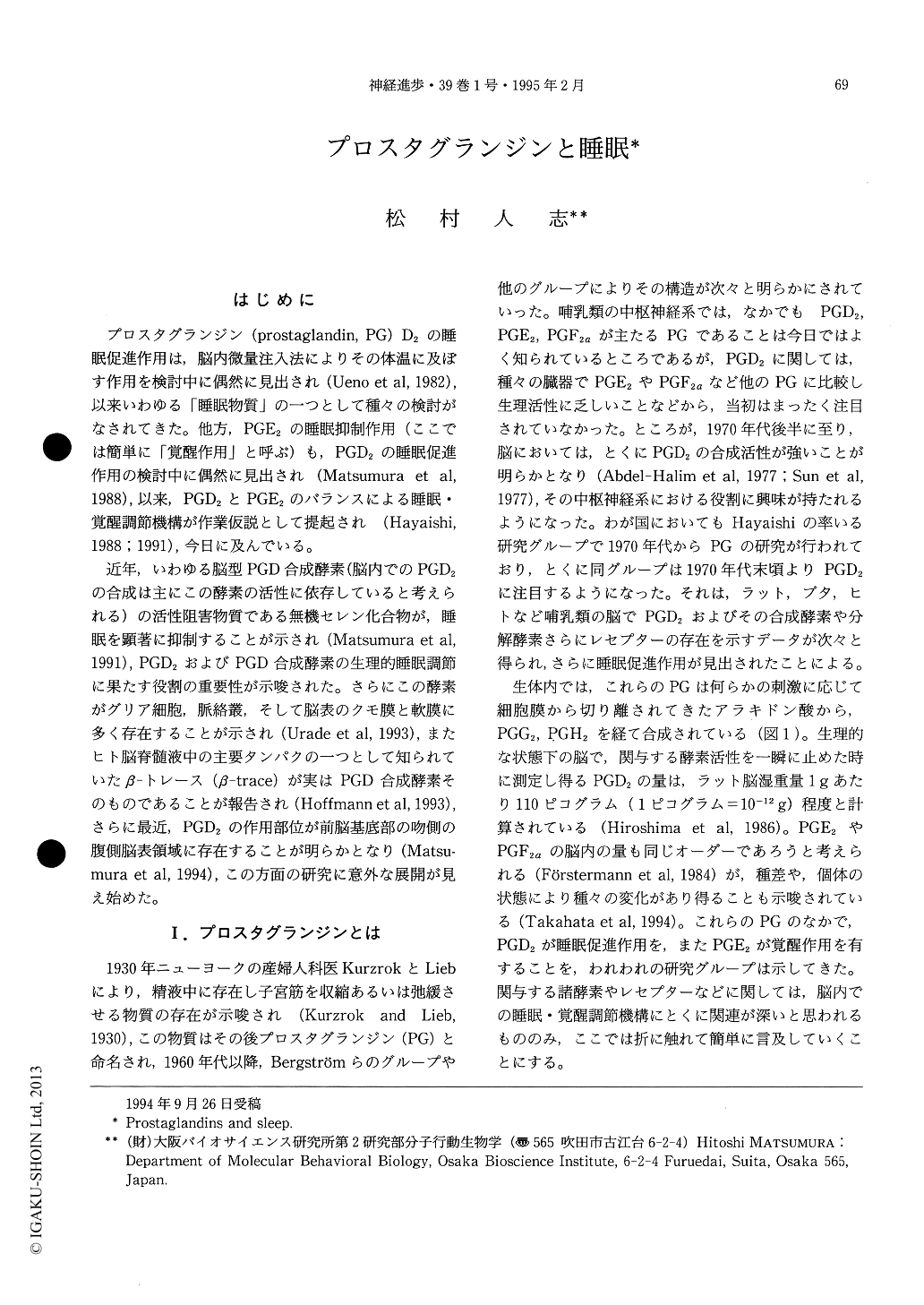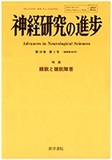Japanese
English
- 有料閲覧
- Abstract 文献概要
- 1ページ目 Look Inside
はじめに
プロスタグランジン(prostaglandin,PG)D2の睡眠促進作用は,脳内微量注入法によりその体温に及ぼす作用を検討中に偶然に見出され(Ueno et al,1982),以来いわゆる「睡眠物質」の一つとして種々の検討がなされてきた。他方,PGE2の睡眠抑制作用(ここでは簡単に「覚醒作用」と呼ぶ)も,PGD2の睡眠促進作用の検討中に偶然に見出され(Matsumura et al,1988),以来,PGD2とPGE2のバランスによる睡眠・覚醒調節機構が作業仮説として提起され(Hayaishi,1988:1991),今日に及んでいる。
近年,いわゆる脳型PGD合成酵素(脳内でのPGD2の合成は主にこの酵素の活性に依存していると考えられる)の活性阻害物質である無機セレン化合物が,睡眠を顕著に抑制することが示され(Matsumura et al,1991),PGD2およびPGD合成酵素の生理的睡眠調節に果たす役割の重要性が示唆された。
Prostaglandin (PG) D2-sensitive, sleep-promoting zone was recently defined in the ventral surface of the rostral basal forebrain. When rats, a nocturnal animal, were bilaterally infused with PGD2 into the subarachnoid space of this zone during the night, the amount of SWS extraordinarily increased up to the daytime level, i. e., to the maximum level that can be achieved physiologically. PGD2 is synthesized from its precursor, PGH2, in the brain of rats mainly by the brain-type PGD synthase [prostaglandin-H2 D-isomerase ; (5Z 13E) - (15S) -9a, 11a-epidioxy-15-hydroxyprosta-5, 13-dienoate D-isomerase, EC 5. 3. 99. 2].

Copyright © 1995, Igaku-Shoin Ltd. All rights reserved.


